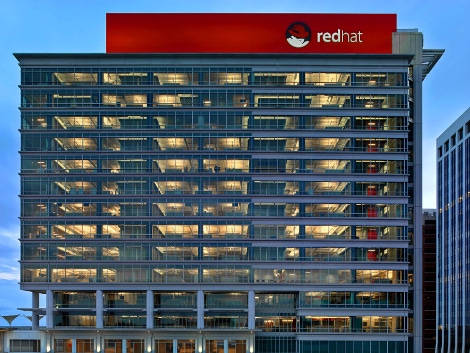

Editorial-Theme-Art_DCK_2016_Feb
This month we focus on data centers built to support the Cloud. As cloud computing becomes the dominant form of IT, it exerts a greater and greater influence on the industry, from infrastructure and business strategy to design and location. Webscale giants like Google, Amazon, and Facebook have perfected the art and science of cloud data centers. The next wave is bringing the cloud data center to enterprise IT… or the other way around!
OpenStack is hard. It’s hard to take the conglomeration of about 20 open source projects, each at its own stage of maturity, collectively referred to as OpenStack, and turn it into a functioning cloud. This has created a whole services market for companies that can help users stand up their own OpenStack clouds, and Rackspace is going after this market hard.
Managed services, making difficult things easier for customers, are bread and butter for the Windcrest, Texas-based company that played a key role in creation of the original open source cloud infrastructure project. Seeing an opportunity in helping enterprise IT shops that aren’t married to VMware and Microsoft – and therefore naturally inclined to go with those two vendors’ respective private cloud products – Rackspace has partnered with Red Hat to provide private cloud infrastructure based on Red Hat’s OpenStack distribution.
Why Red Hat? Because Enterprise
Of all the companies that have attempted to build an enterprise business around open source software, Red Hat has been one of the more successful ones, thanks to its enterprise distribution of Linux. Nearly two-thirds of all Linux servers running in enterprise data centers are running on Red Hat.
If enterprise adoption of OpenStack is to follow the same trajectory as the enterprise adoption of Linux – a parallel OpenStack supporters like to draw; a lot – aligning with the company that played a key role in pushing Linux along its trajectory makes a lot of sense. Besides, Red Hat already has more than a foot in the door with many enterprise IT shops, and all that’s left to do is sell them on OpenStack.
Others with a lot of traction in the enterprise – the likes of Cisco, IBM, and Oracle – have already laid the groundwork for getting into the business of making OpenStack easy for customers, mostly by acquiring small firms with OpenStack chops.
“Rackspace wants to get a piece of that too, because there’s a lot of untapped cloud revenue potential for service providers locked inside enterprise data centers,” Melanie Posey, a research VP at IDC who covers cloud, hosting, and managed network services, said.
Read more: Red Hat’s OpenStack Ambitions Move it Beyond its Linux OS Core
Rackspace is now offering its well-known managed services and support around Red Hat-based private OpenStack clouds that can be hosted in Rackspace data centers, in customers’ own data centers, or in third-party colocation facilities.
“A lot of enterprises are being more receptive to that message coming from Rackspace if they go in there with Red Hat,” Posey said.
There’s also a long history between the two companies. Red Hat was an early investor in Rackspace, and Rackspace provides numerous services around Red Hat’s enterprise software products.
“We have a long history of being able to provide Fanatical Support on Red Hat products and solutions,” Darrin Hanson, VP and general manager of OpenStack Private Cloud at Rackspace, said.
Not the Only Way to do Cloud – by Far
The challenge for Rackspace, Red Hat, or anyone else selling OpenStack private clouds to enterprises is the massive install base of VMware and Microsoft software in enterprise data centers. VMware has its own software that can essentially turn existing VMs into private clouds that can then plug into public clouds, and Microsoft this month rolled out the beta version of Azure Stack, which provides a way to stand up a private cloud that to the user feels like its massive public cloud and, naturally, plugs into that massive public cloud, which becomes its virtually infinite extension.
Read more: What (Hardware) You Need to Build an Azure Cloud in Your Data Center
There’s also the challenge of explaining to enterprise IT managers why they should go through all the trouble of standing up private clouds in their data centers at all, when they can simply use Azure or Amazon Web Services. Posey said not all of those enterprise customers necessarily want to learn how to use the big public clouds, and many will simply stick with doing some projects in-house simply because that’s the way they’ve always done it.
Enterprises Choose Hybrid Cloud
Private OpenStack cloud also doesn’t preclude anyone from using public cloud services too, and there are ways to connect OpenStack to various public clouds. In fact, Rackspace provides managed services and support for both Azure and AWS, and a combination of OpenStack and one or more public cloud services is likely to become one of the more popular types of environments it will stand up for users.
Hybrid cloud, where a company mixes private cloud with public cloud, is on the rise. Only 18 percent of cloud-using respondents to the latest State of the Cloud survey by RightScale use public cloud only, and only six percent use just private cloud. All the others (71 percent) use some form of hybrid cloud.
VMware’s virtualization and cloud software vSphere is the most popular way to build private clouds, according to the survey. More than 40 percent of respondents said they used vSphere as a private cloud. OpenStack and VMware vCloud Suite each have 19 percent of all private cloud deployments among survey respondents.
About the Author
You May Also Like







